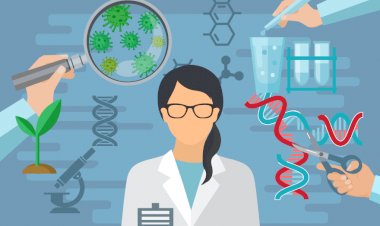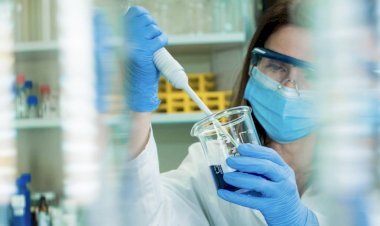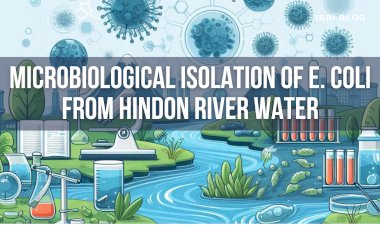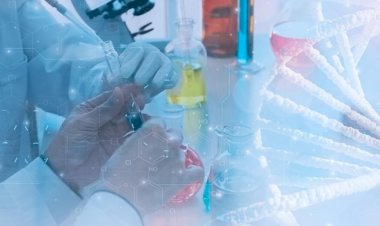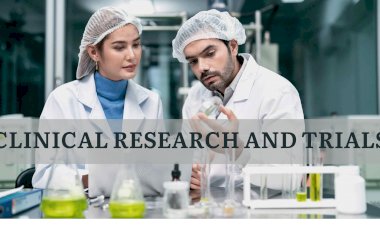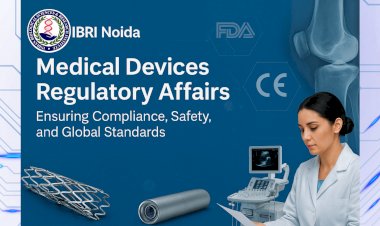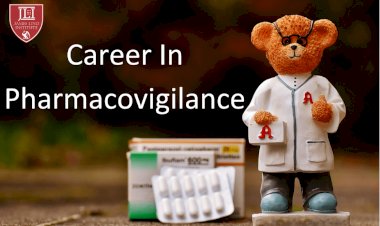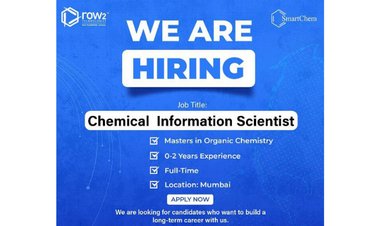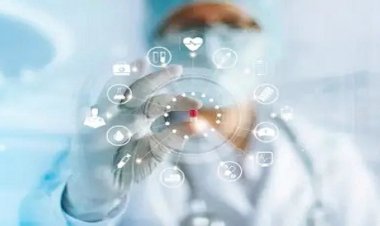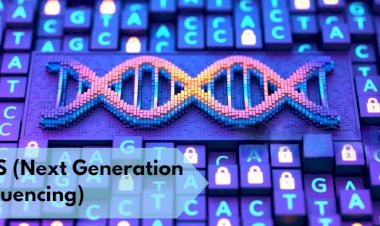TRANSFORMING LIFE SCIENCES: THE EXPANDING ROLE OF AI AND MACHINE LEARNING IN MODERN BIOLOGY
This blog explores how Artificial Intelligence (AI) and Machine Learning (ML) are revolutionizing the life sciences industry. From accelerating drug discovery and enabling personalized medicine to enhancing medical imaging, microbiome research, and smart biomanufacturing, AI and ML are driving innovation across biology and healthcare. The post also highlights real-world applications, future directions, and the role of institutions like IBRI Noida in equipping bioscience professionals with the skills needed to thrive in this data-driven era.

The life sciences are undergoing a revolution—fueled not by pipettes and petri dishes alone, but by algorithms, data, and intelligent systems. Artificial Intelligence (AI) and Machine Learning (ML) are rapidly becoming indispensable tools in understanding biology, predicting diseases, and developing cutting-edge treatments.
Whether it's analyzing gene expression data, designing new drugs, or diagnosing diseases from imaging scans, AI and ML are helping life science professionals unlock new insights faster and more accurately than ever before.
What Are AI and ML, and Why Do They Matter in Biology?
- Artificial Intelligence (AI): The simulation of human intelligence by machines, including reasoning, learning, and decision-making.
- Machine Learning (ML): A subset of AI where algorithms learn from data patterns and make predictions or decisions without being explicitly programmed.
In life sciences, these technologies help manage the enormous complexity of biological systems, which involve thousands of interacting genes, proteins, and environmental factors.
Key Applications of AI/ML in Life Sciences
1. Drug Discovery and Development
Traditional drug discovery is slow and expensive—often taking more than 10 years and billions of dollars. AI can dramatically reduce this by:
- Predicting how molecules interact with proteins (structure-based drug design)
- Identifying drug repurposing opportunities (as seen during COVID-19)
- Screening large chemical libraries efficiently
Example: BenevolentAI and Atomwise use deep learning to identify new drug candidates faster than traditional methods.
2. Genomics, Transcriptomics, and Personalized Medicine
Life science research generates terabytes of genetic data—far too much for manual analysis. ML tools are used to:
- Predict disease susceptibility based on genetic variants.
- Interpret next-generation sequencing (NGS) results.
- Design personalized treatment plans based on individual genomic profiles.
Example: IBM Watson Genomics helps oncologists interpret patients’ genomic data and recommend personalized cancer treatments.
3. Medical Imaging and Digital Pathology
AI excels at recognizing patterns in visual data. In healthcare, this has enabled:
- Faster and more accurate image-based diagnosis (e.g., cancer, pneumonia, fractures)
- Automated cell counting and tumour grading in pathology slides.
- Early disease detection through subtle changes in imaging scans
Example: Google Health's AI system detects breast cancer in mammograms with greater accuracy than some radiologists.
4. Microbiome Research and Metagenomics
The human microbiome—our internal ecosystem of trillions of microorganisms—plays a vital role in health. ML models help:
- Identify microbial species from sequencing data.
- Link microbiome profiles to diseases.
- Predict the effects of probiotics and dietary changes.
Example: AI is being used to develop microbiome-based therapies for metabolic and immune disorders.
5. Neurobiology and Mental Health Research
AI is making headway in understanding the complex structure and function of the brain by:
- Mapping neural pathways using ML-based image analysis
- Detecting early signs of Alzheimer's and Parkinson's from cognitive patterns
- Predicting responses to psychiatric treatments
Example: Startups are using AI to analyze speech and behaviour for early detection of mental health conditions.
6. Laboratory Automation and Smart Biomanufacturing
Smart laboratories now leverage AI to:
- Optimize culture conditions for biologics production.
- Monitor bioreactors in real time.
- Predict equipment failure and reduce downtime.
This makes biopharmaceutical production more efficient, consistent, and scalable.
Challenges and Limitations
Despite its promise, AI in life sciences faces several hurdles:
- Data Quality and Bias: Incomplete or biased datasets can lead to misleading models.
- Interpretability: Many AI systems, especially deep learning models, operate as "black boxes," making it hard for scientists to trust or verify their decisions.
- Ethical and Privacy Concerns: Handling sensitive health and genetic data demands strict privacy and compliance measures.
- Skill Gap: A lack of cross-disciplinary talent who understand both biology and data science can slow integration.
The Future: Where AI and Life Sciences Are Headed
As datasets grow richer and algorithms become more sophisticated, the possibilities are endless. Future directions include:
- AI-designed proteins and enzymes for synthetic biology and therapeutics.
- Real-time disease outbreak monitoring using AI on global health data.
- AI-driven agricultural genomics for developing climate-resilient crops.
- Virtual clinical trials powered by patient digital twins.
- Smart implants and biosensors that adapt based on AI predictions.
IBRI Noida: Advancing Bioscience Education with Emerging Technologies
The Indian Biological Sciences and Research Institute (IBRI), based in Noida, is a pioneering institution committed to advancing education, research, and professional training in the life sciences. Known for its practical, industry-aligned approach, IBRI equips students and researchers with hands-on skills in molecular biology, microbiology, bioinformatics, and emerging technologies. Recognizing the growing impact of AI and machine learning in biosciences, IBRI actively integrates computational biology and data-driven methods into its training programs. By fostering interdisciplinary learning and encouraging innovation, IBRI is preparing the next generation of scientists to thrive in a rapidly evolving scientific landscape where biology and technology go hand in hand.
Conclusion: A New Era of Scientific Discovery
AI and ML are not replacing scientists—they are amplifying human ability to interpret complex systems and make impactful discoveries. In the life sciences, where every breakthrough can save lives, reduce suffering, or improve quality of life, these technologies are more than just helpful—they're essential.
By embracing AI and ML, researchers, clinicians, and biotechnologists are opening the door to a smarter, faster, and more personalized future in biology and medicine.








